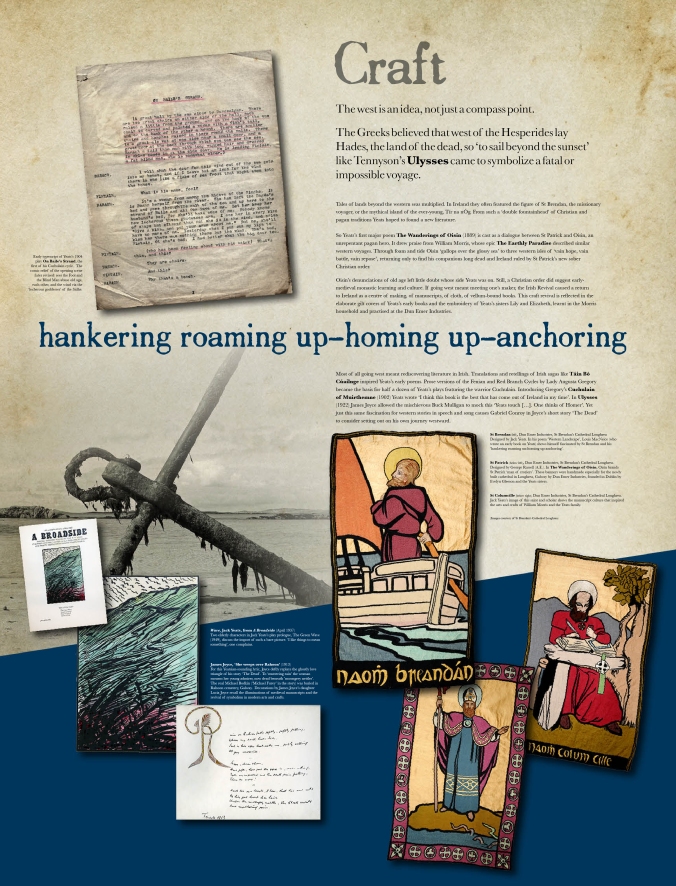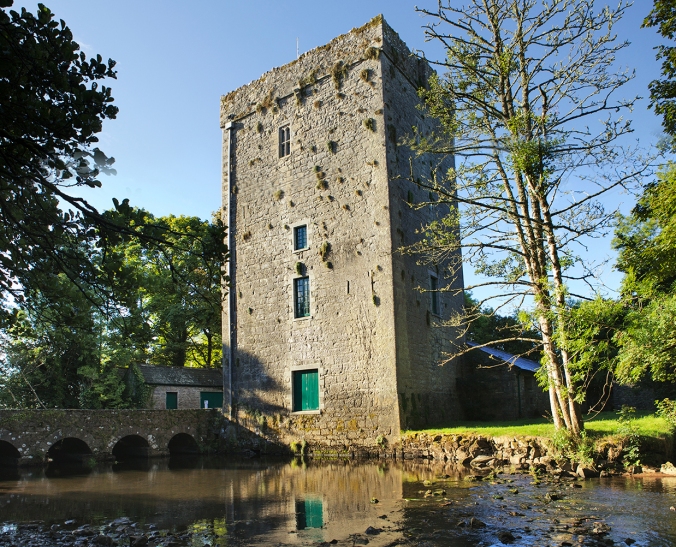(The following article by Adrian Paterson about the Yeats2015 celebrations and the Yeats Thoor Ballylee Society appeared in the Irish Times on 10 February 2015. It is reproduced here with permission.)

This year sees a worldwide series of creative and cultural events celebrating the 150th anniversary of the birth of William Butler Yeats. Launched by Senator Susan O’Keeffe and Minister for the Arts, Heritage and the Gaeltacht Heather Humphreys as part of Ireland’s decade of commemorations, Yeats2015 gives the anniversary decade a new focus.
But why remember, of all things, a dead poet? What good can calling Yeats from the dead do us?
Yeats himself thought a lot about life after death, and his poems ask nagging questions of those beyond the grave. Fittingly, Yeats2015 might just prove the most lively of all the commemorations.
It is the only one that celebrates a birth, rather than remembering an event of sober historical record. It is the only one exclusively devoted to artistic achievement, so central to this island’s story.
It is locally driven but international in scope, with events centred on places important to Yeats, such as Galway, Sligo, Dublin, London, and further afield, Paris, Utrecht, Madrid, Atlanta, Melbourne, Tokyo, Beijing.
Yeats today is respected rather than loved. His unassailable position on the Leaving Cert syllabus has not resulted in the universal affection of schoolchildren, among whom this self-confessed “smiling public man” walked and dreamed of loves and loss.
An association with Ascendancy Protestantism (which doesn’t cloud opinion of Samuel Beckett or his own brother, the artist Jack Yeats) underplays his own radically unorthodox beliefs, and the down-at-heel origins of a young man who used to ink his feet to hide the holes in his socks.
Yeats is seen as lofty, aloof, abstract, when in fact he was engaged, committed, sensual. But we don’t have to like Yeats to listen. We don’t have to agree with him to learn something. Yeats would have loathed a hagiography and Yeats2015 will not be one. His is a bountiful, contradictory shade that deserves to be called up and questioned again.
Dates mattered to Yeats. For him, the whirlings of moons and midnights set in train the larger forces of history and creativity this commemorative decade is designed to mark.
Revolutionary decade
It is hard to imagine that revolutionary decade without him. Those repeating the lines “Romantic Ireland’s dead and gone,/ It’s with O’Leary in the grave” sometimes forget that September 1913, first published in this newspaper, is an impassioned defence of modern art, a frontal attack on those who thought progress was a new road bridge over the Liffey and breaking the unions rather than workers’ rights and a free public gallery.
Easter 1916 commemorates the rebels’ sacrifice but questions it too, painfully acknowledging the ambiguity of founding a state on violent insurrection. The War of Independence sparked the savage Nineteen Hundred and Nineteen, which condemns violence against the person and against art, yet acknowledges our thirst and culpability for both.
These poems may name dates but have not become dated. Like them, The Second Coming knows intimately the horrors of the 20th century, perhaps explaining the poem’s prescience even today. Slavoj Zizek is among countless public figures to cite it, arguing in response to the recent Parisian murders that it “seems perfectly to render our present predicament: ‘The best lack all conviction, while the worst are full of passionate intensity’.”
Meditations in Time of Civil War, meanwhile, wrests from the Troubles a lyric Seamus Heaney felt still mattered: its refrain “O honey-bees – Come build in the empty house of the stare” pleads for peace to a deafened world.
That bloody decade made Ireland, but it also made Yeats as a poet. Facing a new reality he turned a personal midlife crisis into spare, unflinching public poems whose powerful lines and pressing concerns still sound like tolling bells.
However we think of Yeats, poetic achievement must be at the heart of any commemoration. But Yeats was more than a poet. He was a cultural revolutionary who became a cultural entrepreneur. He began things, co-founding the Abbey Theatre, the Irish Literary Society and, with his talented family, the Cuala Press, producing designs and books from a single hand-press in Dublin.
He was anything but a solitary dreamer: his collaborations with musicians, actors, dramatists, stage designers, folklorists, journalists, artists, dancers, printers, occultists, broadcasters and lovers are reflected in the vibrant range of celebratory events on offer.
A disturbing late flirtation with authoritarian politics remains rightly controversial and must cause us to reflect on the role of the arts in a democratic society. As a working politician, however, Yeats was a liberal and his conception of the nation strikingly diverse. As a senator he promoted Irish-language research, while questioning compulsory Irish. Citing cross-Border unity and minority rights he argued for long-established rights to divorce, only recently restored.

Defender of free speech
He defended free speech against religious interests, denouncing censorship and mocking the new State’s “committee for evil literature”. He was in principle a European, trading in a global artistic currency; but in practice a localist, insistent on self-determination. The coinage commission he chaired produced animal designs that lasted until the coming of the euro.
His poems honour the Irish landscape. You might even say his shade balefully haunts our ghost estates: an alternative to profligate new-builds and property booms is shown by the careful restoration of a Hiberno-Norman tower in Galway with local labour and materials, wood, thatch, ironwork, and slates. This year of all years it must be hoped the Yeats Thoor Ballylee Society receives support for its reopening.
WB Yeats was a vortex of energy, a protean, recalcitrant, joyous figure who believed in the value of art to shape a nation and to change the world. Perhaps, for a year, we should join this dead poet’s society and see what happens.
Adrian Paterson is a lecturer in English at NUI Galway and a member of the Yeats2015 steering committee and the Yeats Thoor Ballylee Society.





































